PIVOT Points
The transition strategy, tools and resources
you need to be ready for ICD-10


You should be gradually increasing the number of real-life claims you’re dual coding in ICD-9 and ICD-10 to minimize the impact of the transition on your productivity and ultimately revenue.
Aim to be dual coding a minimum of 10% of your claims with the goal of increasing this by an additional 5% each month until ICD-10 arrives, says Brandi Whitemyer, HCS-D, director of education and training for DecisionHealth in Gaithersburg, Md.
And starting Aug. 3, home health agencies will need to begin dual coding all claims, as that is when 60-day home health episodes will begin to span the Oct. 1 implementation date. This will necessitate that the OASIS and request for anticipated payment (RAP) forms be coded in ICD-9 while the final claim is coded in ICD-10, because it will be submitted on or after Oct. 1. [MLN Matters SE1410]
All these forms – SOC and final claim – must be coded at the same time to ensure that what is billed to Medicare on the final claim matches what is coded on the initial assessment and plan of care, hence the need for dual coding.
Now is the time to be assessing and training for ICD-10 or your agency will be at risk for dramatic losses in productivity and ultimately revenue. Consider that experts have warned of an expected 54% loss of productivity, and CMS is expecting at least a 10% spike in denials in the first few months following the ICD-10 transition.
Don’t take an all-or-nothing approach to dual coding preparation, says Trish Twombly, HCS-D, senior director for DecisionHealth in Gaithersburg, Md. You don’t have to be coding every single claim in ICD-9 and ICD-10 right now.
If you’re pressed for time with your current workload, try to dual code three claims per week to start. Then work up to five claims a week, and by the end of April, aim to be dual coding half of your claims, Twombly says.
If you’re really strapped for time, take baby steps, like aiming to code just the primary diagnosis, or just the first two diagnoses of a claim in ICD-10, says Vonnie Blevins, HCS-D, coding and billing manager for Excellence Healthcare in Houston. “Something is better than nothing,” she says.